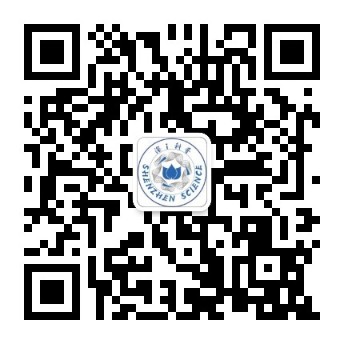音频科普:你生活在一个奇怪的太阳系
音频科普:你生活在一个奇怪的太阳系
Astronomers found that other star systems tend to host similarly sized exoplanets—far different from ours.天文学家们发现,其他星系往往能承载大小相似的系外行星——而这与我们生活的星系截然不同。
撰文\播音:克里斯托弗·因塔利亚塔(Christopher Intagliata)
翻译:陈美娟
审校:郭晓
The more astronomers study the heavens, the more they realize: our solar system is weird.
关于星空,天文学家们研究的越多,他们越发现:我们的太阳系是怪异的。
"There are a few things that make the solar system kind of strange." Lauren Weiss, an astrophysicist at the University of Montreal. "One of which is we have a giant planet. Only about 10 percent of sunlike stars have a giant planet. And there are probably even fewer that have two giant planets."
“有几样事情让太阳系看起来有点奇怪。”来自蒙特利尔大学的天体物理学家Lauren Weiss这么说。“其中一条是我们太阳系有一个巨大的行星。只有10%的类日星体有巨大的行星。而有两颗巨型行星的就更少了。”
In addition to giant Jupiter and lesser giant Saturn, we have tiny Mercury—just a bit bigger than Earth’s moon.
除了巨大的木星和稍小些的土星,太阳系还有水星——它只比绕地的月球大一些。
So if we’re weird, what does a typical solar system look like? Weiss and her team trained their telescopes on 355 star systems known to host a handful of small exoplanets. And they found that most of the planets within individual star systems tended to be similar in size.
所以,如果我们太阳系的构成是不合常理的,一个标准的太阳系应该是什么样子的呢?Weiss与她的团队将他们的望远镜对准了355个星系,这些星系已知能承载一些小型系外行星。他们发现,独立星系中的绝大多数行星往往都有相同的大小。
"So if I'm a planet, and I'm, say, two times the size of Earth, my neighbor, the next planet over, is also likely to be two times the size of Earth, give or take a little bit."
“如果我是一个星球,我有地球的两倍大,那么住我旁边的邻居可能也有差不多地球的两倍大。”
And they were strung out at similar distances from each other too…like peas in a pod, she says. Compared to that orderly array, our system looks more like, "Uh let's see, if I stick with food…I don't know…like a whole Thanksgiving dinner or something?"
这些星球一字排开,彼此间的距离也相似……就像豆荚里的豆子一样,她说。与那种有序的排列相比,我们的星系看起来更像是,“呃让我想想,如果我继续用食物打比方……也许就像是感恩节的晚餐之类的吧?”
The results are in The Astronomical Journal. [Lauren M. Weiss et al., The California-Kepler Survey. V. Peas in a Pod: Planets in a Kepler Multi-planet System Are Similar in Size and Regularly Spaced]这项研究结果刊登在《天文学》杂志上。
As for hunting for habitable worlds: "If we're trying to find an Earth-sized planet in the habitable zone”—not too close to the star but not too far away either—“and we find an Earth-sized planet closer in, it might be worthwhile to continue searching for planets around that star."
在寻觅宜居的星球这点上:“如果我们想在宜居的范围内——离恒星要既不太远又不太近——找到一颗地球那么大的行星,并且确实在附近找到了一颗类地行星,那么那颗恒星周围的行星值得继续发掘。”
Because there might just be a few more peas in the pod.
因为豆荚里可能还有还有更多豆子呢。
关注【深圳科普】微信公众号,在对话框:
回复【最新活动】,了解近期科普活动
回复【科普行】,了解最新深圳科普行活动
回复【研学营】,了解最新科普研学营
回复【科普课堂】,了解最新科普课堂
回复【科普书籍】,了解最新科普书籍
回复【团体定制】,了解最新团体定制活动
回复【科普基地】,了解深圳科普基地详情
回复【观鸟知识】,学习观鸟相关科普知识
回复【博物学院】,了解更多博物学院活动详情
Astronomers found that other star systems tend to host similarly sized exoplanets—far different from ours.天文学家们发现,其他星系往往能承载大小相似的系外行星——而这与我们生活的星系截然不同。
撰文\播音:克里斯托弗·因塔利亚塔(Christopher Intagliata)
翻译:陈美娟
审校:郭晓
The more astronomers study the heavens, the more they realize: our solar system is weird.
关于星空,天文学家们研究的越多,他们越发现:我们的太阳系是怪异的。
"There are a few things that make the solar system kind of strange." Lauren Weiss, an astrophysicist at the University of Montreal. "One of which is we have a giant planet. Only about 10 percent of sunlike stars have a giant planet. And there are probably even fewer that have two giant planets."
“有几样事情让太阳系看起来有点奇怪。”来自蒙特利尔大学的天体物理学家Lauren Weiss这么说。“其中一条是我们太阳系有一个巨大的行星。只有10%的类日星体有巨大的行星。而有两颗巨型行星的就更少了。”
In addition to giant Jupiter and lesser giant Saturn, we have tiny Mercury—just a bit bigger than Earth’s moon.
除了巨大的木星和稍小些的土星,太阳系还有水星——它只比绕地的月球大一些。
So if we’re weird, what does a typical solar system look like? Weiss and her team trained their telescopes on 355 star systems known to host a handful of small exoplanets. And they found that most of the planets within individual star systems tended to be similar in size.
所以,如果我们太阳系的构成是不合常理的,一个标准的太阳系应该是什么样子的呢?Weiss与她的团队将他们的望远镜对准了355个星系,这些星系已知能承载一些小型系外行星。他们发现,独立星系中的绝大多数行星往往都有相同的大小。
"So if I'm a planet, and I'm, say, two times the size of Earth, my neighbor, the next planet over, is also likely to be two times the size of Earth, give or take a little bit."
“如果我是一个星球,我有地球的两倍大,那么住我旁边的邻居可能也有差不多地球的两倍大。”
And they were strung out at similar distances from each other too…like peas in a pod, she says. Compared to that orderly array, our system looks more like, "Uh let's see, if I stick with food…I don't know…like a whole Thanksgiving dinner or something?"
这些星球一字排开,彼此间的距离也相似……就像豆荚里的豆子一样,她说。与那种有序的排列相比,我们的星系看起来更像是,“呃让我想想,如果我继续用食物打比方……也许就像是感恩节的晚餐之类的吧?”
The results are in The Astronomical Journal. [Lauren M. Weiss et al., The California-Kepler Survey. V. Peas in a Pod: Planets in a Kepler Multi-planet System Are Similar in Size and Regularly Spaced]这项研究结果刊登在《天文学》杂志上。
As for hunting for habitable worlds: "If we're trying to find an Earth-sized planet in the habitable zone”—not too close to the star but not too far away either—“and we find an Earth-sized planet closer in, it might be worthwhile to continue searching for planets around that star."
在寻觅宜居的星球这点上:“如果我们想在宜居的范围内——离恒星要既不太远又不太近——找到一颗地球那么大的行星,并且确实在附近找到了一颗类地行星,那么那颗恒星周围的行星值得继续发掘。”
Because there might just be a few more peas in the pod.
因为豆荚里可能还有还有更多豆子呢。
关注【深圳科普】微信公众号,在对话框:
回复【最新活动】,了解近期科普活动
回复【科普行】,了解最新深圳科普行活动
回复【研学营】,了解最新科普研学营
回复【科普课堂】,了解最新科普课堂
回复【科普书籍】,了解最新科普书籍
回复【团体定制】,了解最新团体定制活动
回复【科普基地】,了解深圳科普基地详情
回复【观鸟知识】,学习观鸟相关科普知识
回复【博物学院】,了解更多博物学院活动详情

做科普,我们是认真的!
扫描关注深i科普公众号
加入科普活动群

- 参加最新科普活动
- 认识科普小朋友
- 成为科学小记者
 会员登录
会员登录
















 深圳市宝安区国际会展中心20号馆
深圳市宝安区国际会展中心20号馆







